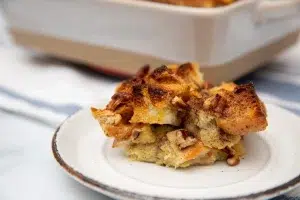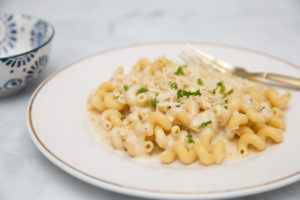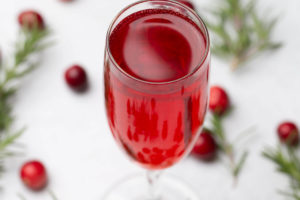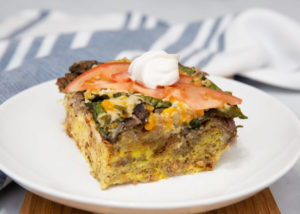How to Check Food Labels for Allergens
According to the CDC, nearly 32 million Americans and roughly 1 in 13 children have food allergies. If you’re new to food allergies, reading food labels can be a bit intimidating. To help you avoid a costly mistake, I’m going to briefly go over food labeling laws and hopefully simplify it for you.

What should you do first?
The first thing you should do when diagnosed with a food allergy, is ask your doctor to go over everything you need to know. However, most doctors don’t specialize in nutrition and might not be the best source for understanding how to read food labels.
I can’t tell you how many times I’ve heard something like, “my doctor told me to just read the labels, but didn’t tell me how confusing it would be.”
There are plenty of other resources too, so do your homework and you will feel confident the next time you shop for groceries.
So How Do You Check Food Labels for Allergens?
It’s fairly simple once you know the rules, but can be a bit confusing at first. I’m going to break it down for you and show you what to look for.

What foods are listed as allergens on food labels?
According to the FDA, “Congress passed the Food Allergen Labeling and Consumer Protection Act of 2004(FALCPA). This law identified eight foods as major food allergens: milk, eggs, fish, Crustacean shellfish, tree nuts, peanuts, wheat, and soybeans.”
This is by no means a comprehensive list of potential allergens, they are just the most common.
If you are allergic to one of those eight foods, this will simplify your label reading. If not, it’s going to take some extra detective work to stay safe.
Ingredients List and Allergen Statements
There are two places where an allergen will be listed on food labels. The first place is in the ingredients list. However, it’s not always clear if something is derived from a specific food source.
When that happens, the allergen must be clearly labeled in the “contains statement” (usually under the ingredients list – it must be in the same typeface as the ingredients and may or may not be in bold). I’ll explain more on the “contains statement” in a moment.

What are the rules for declaring allergens on food labels?
According to food labeling laws in the US, one of two things must happen when a manufacturer declares an allergen on a food label.
1. The allergen must be labeled clearly in the ingredients list or the “contains statement.” Let’s use milk as an example. The word “milk” must appear at least once either in the ingredients list or in a “contains statement.”
There are derivatives of milk that are commonly used. For example, casein, whey, non fat dry milk, lactose, etc. The FDA does not require consumers to know all those terms and what they are derived from (though it definitely doesn’t hurt on the off chance the label is not FDA compliant).
Manufacturers are required to have the word “milk” at least one time. It may appear as “whey (milk)” in the ingredients list, or “contains: milk,” but both are not required. If you see “skim milk powder” in the ingredient list, then the “contains statement” is considered voluntary and not a requirement because the word “milk” is present already.
So the lesson here is always read the ingredients if a contains statement is absent or if the allergen isn’t listed.

2. If the allergen is not clearly labeled in the ingredients list, it must be in a “contains statement.” Occasionally, manufacturers use ingredients that are derived from one of the top eight allergens, but the ingredient name doesn’t make that allergen obvious to consumers.
One of the biggest culprits here is natural flavoring. “Natural” means it can be derived from just about anything, right? So the only way for a consumer to know if the natural flavoring (or another vague ingredient) is derived from milk is for the manufacturer to declare the milk in a “contains statement” like in the photo above.
So what does “may contain” mean?
You might have noticed another kind of statement that says, “may contain.” This is a cross contamination warning and it is voluntary, not required. There’s a major difference between an intolerance and an allergy and the level of reactions to a food ingredient vary greatly from person to person.
For many people, their allergies are so severe that they have to avoid cross contamination. One way to avoid it is to look for a “may contain” statement. Note that “contains” and “may contain” statements do not have to be in bold. They often are, but not always.

What is cross contamination?
Cross contamination means that while an allergen may not be an ingredient in the product itself, that product may be manufactured in a facility that processes foods containing that allergen. They often share manufacturing lines. Even if they do not share lines, particles can still become airborne and contaminate other products.
The FDA has laws for cleaning equipment after each food they produce, but for the most sensitive people, even the tiniest bit of cross contamination can cause a life-threatening reaction. Certain amounts of cross contamination are just unavoidable.
The only way manufacturers can guarantee zero cross contamination is for that ingredient or allergen to never enter the facility in the first place. This is why it’s so important to contact the manufacturer if the labeling doesn’t specify in very clear terms that a food is or is not safe.
THE MOST IMPORTANT THING YOU NEED TO KNOW about this is that THE “MAY CONTAIN” STATEMENT IS VOLUNTARY.
That’s right, food manufacturers in the US are not required to warn consumers of potential cross contamination. Cross contamination should always be assumed until you confirm otherwise from the manufacturer.
Now, this isn’t critical information for everyone. For my family in particular, we are intolerant and not actually allergic to milk and its derivatives. We are not (thus far) reactive to anything with potential cross contamination. I’m grateful for that because it makes feeding my family much simpler.
My top tips for avoiding food allergens:
- Cook everything from scratch. If it has an ingredient list, avoid it.
- Look for allergy friendly brands. There are a handful of food manufacturers that process their products in facilities that are 100% free of the top 8 allergens.
- Contact food manufacturers directly to confirm whether or not a food is safe.
- Join Facebook groups! In my rookie days of going dairy free, I made a lot of mistakes. Facebook groups can be your greatest resource for asking others what not to do. No, they are not experts and never take what someone on the internet (including me) says as absolute, but you can still get so much good information.
Need help meal planning? Check out my complete guide here.
Still have questions?
Fda.gov is a great source for understanding food labeling laws in the US.
Feel free to leave comments and questions and I’ll try to answer what I can. I hope this has been helpful!

Need Recipe Ideas?

Sparkling Prosecco Limeade
This Sparkling Prosecco Limeade is a refreshing and bright alternative to a mimosa. And if you’re not a champagne fan, Prosecco is the perfect pick.

French Toast Casserole
Breakfast is served! If you love French toast but hate how tedious it can be to serve up enough for a whole family, then this recipe for French Toast Casserole is for you.

Vegan Alfredo Sauce
This vegan alfredo sauce is one of the quickest, easiest and most restaurant-worthy dishes that I make. You’ll want to make this on repeat.

Cranberry Vodka Spritzer
This Cranberry Vodka Spritzer is the perfect cocktail for your next brunch. It’s a lightly sweet drink, not too strong and pairs well with just about any breakfast or brunch dish.

Sausage and Rye Breakfast Casserole
Here’s a recipe for a breakfast casserole that’s a bit different. Mushrooms give it an earthy flavor while the zing of the vegan cheeses really set it off nicely. This Sausage and Rye Breakfast Casserole is the perfect breakfast or brunch dish for your next get together.

Gingerbread Pancakes
Oh boy, I love pancakes. Who doesn’t love them? These gingerbread pancakes are perfectly sweet, fluffy and full of the gorgeous holiday flavor that we all love.


i thought i was a pro at reading labels after going dairy free in 2020, but i actually learned a lot from this article!! thank you!! 🙂